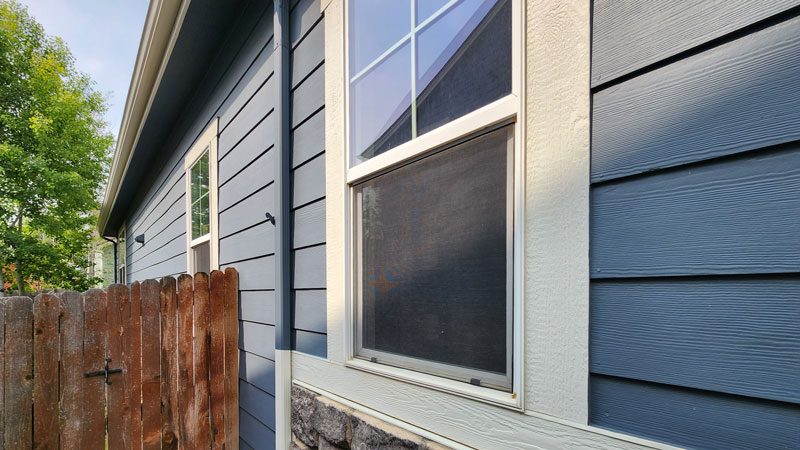Choosing the right Exterior paint:
A comprehensive guide
Painting the exterior of your home is no small feat. It’s a significant investment, both in time and resources. As such, selecting the right type of paint is essential, ensuring that your home looks stunning and remains protected against the elements.
Moreover, the paint you choose is the first line of defense against nature’s unpredictable weather – from scorching sun rays to icy cold snaps. A properly painted home can resist weather damage, mold growth, and even insect infestations. But the question remains: amidst the plethora of brands, finishes, and shades, how do you pinpoint the perfect paint for your needs? It is more than just picking a color you like. It’s also about understanding what works best for the material of your home, your climate, and the desired longevity of your new paint job.
You are not alone if you’re feeling lost amidst the vast array of paint choices. This guide aims to simplify the process, providing you with the knowledge and tips you need to make informed decisions about your exterior remodel. You can then be confident that you have made the best decision for your home.
Understanding the basics: Types of exterior paints
When repainting your home’s exterior, the first decision often revolves around the base of the paint. Essentially, paint falls into two primary categories: water-based, commonly referred to as latex, and oil-based, known as alkyd.
Water-Based paint: Understanding Latex Paints
Water-based or latex paints have become increasingly popular in recent years. One of their standout qualities is the quick drying time, which allows for fast project completion. This rapid drying is especially beneficial if you’re painting in regions with unpredictable weather, as it reduces the chances of the paint being affected by sudden rain showers. Another advantage of latex paints is their easy clean-up process using just soap and water. Compared to their oil-based counterparts, they have a lower odor, making them a popular choice for many homeowners. However, while latex paint excels in many areas, it struggles to adhere to surfaces previously painted with oil-based paint.
Oil-Based or Alkyd paints
On the other hand, oil-based or alkyd paints bring a different set of advantages to the table. Their application is often smoother, resulting in a more uniform finish. The result often boasts a durable, glossy finish that stands the test of time. This durability is why many professionals and homeowners opt for oil-based paints for areas exposed to significant wear and tear. Furthermore, oil-based paints adhere well to various surfaces, ensuring a long-lasting paint job. However, they are not without their challenges. The drying time for oil-based paints is considerably longer, which might stretch the duration of your painting project. Clean-up is also more involved, requiring mineral spirits instead of the simple soap and water solution that latex paints allow. Additionally, the pungent odor they produce might be off-putting to some people.
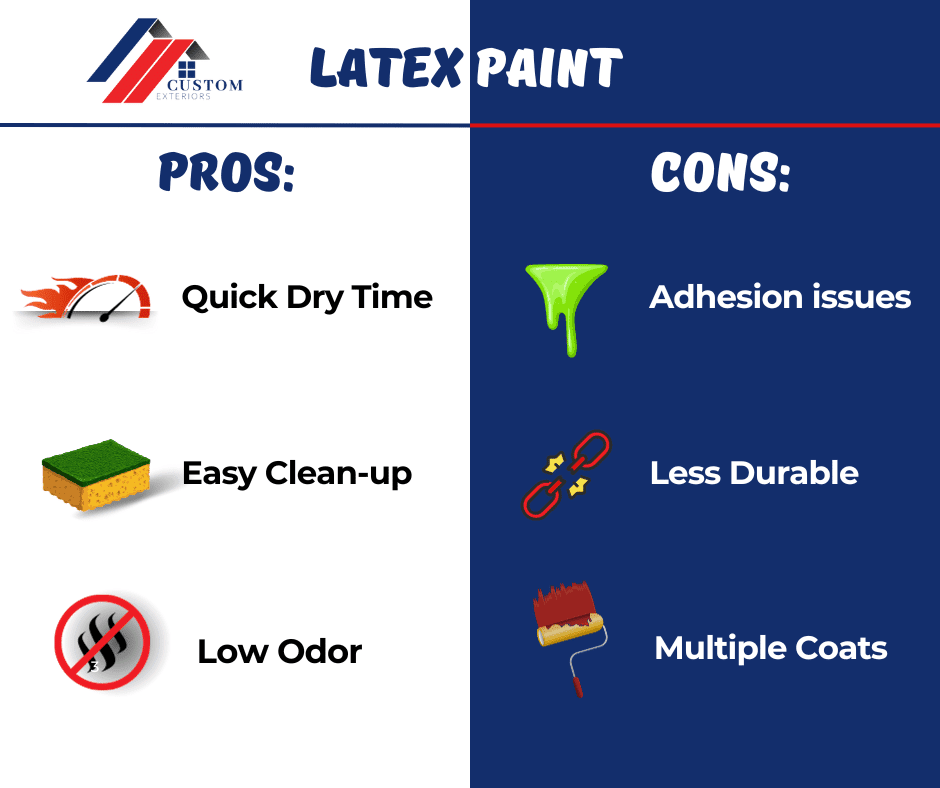
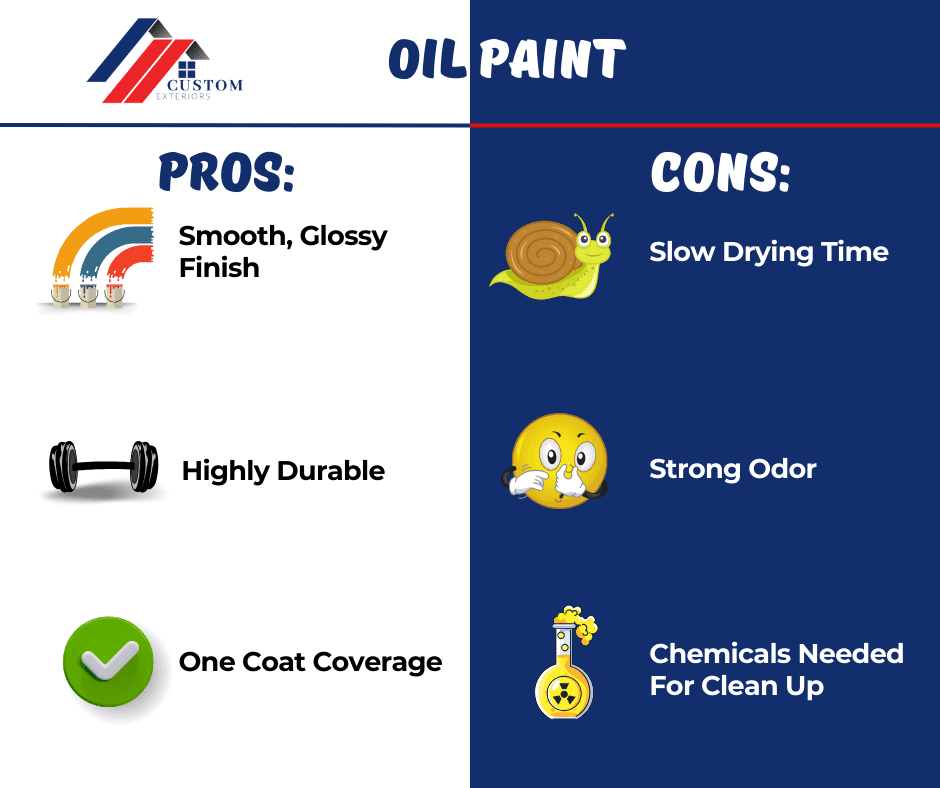
Both latex and alkyd paints have their benefits and disadvantages. Your choice between the two should factor in your home’s specific needs, the region’s climate, and your personal preferences, especially concerning drying time and odor.
The importance of Finish: making the right choice
When we talk about painting our homes, color is often the first thing that comes to mind. However, the finish and sheen of the paint are equally important. This aspect determines how the paint reflects light, affecting its appearance and how it stands up to daily wear and tear. Each finish has different properties, catering to different needs and styles. The sheens available in paint are:
- Flat/Matte paint finish is a known for its non-reflective properties.
- Eggshell paint finish is has a slight sheen similar to the sheen on an eggshell.
- Satin paint finish is a reliable, favorite choice as it provides a gentle gloss without being overly shiny.
- Semi-Gloss paint finish is a vibrant finish that begins to step more into a reflective territory.
- Glossy paint finish is for those who want to make a bold statement, providing almost a shiny, mirror-like appearance.
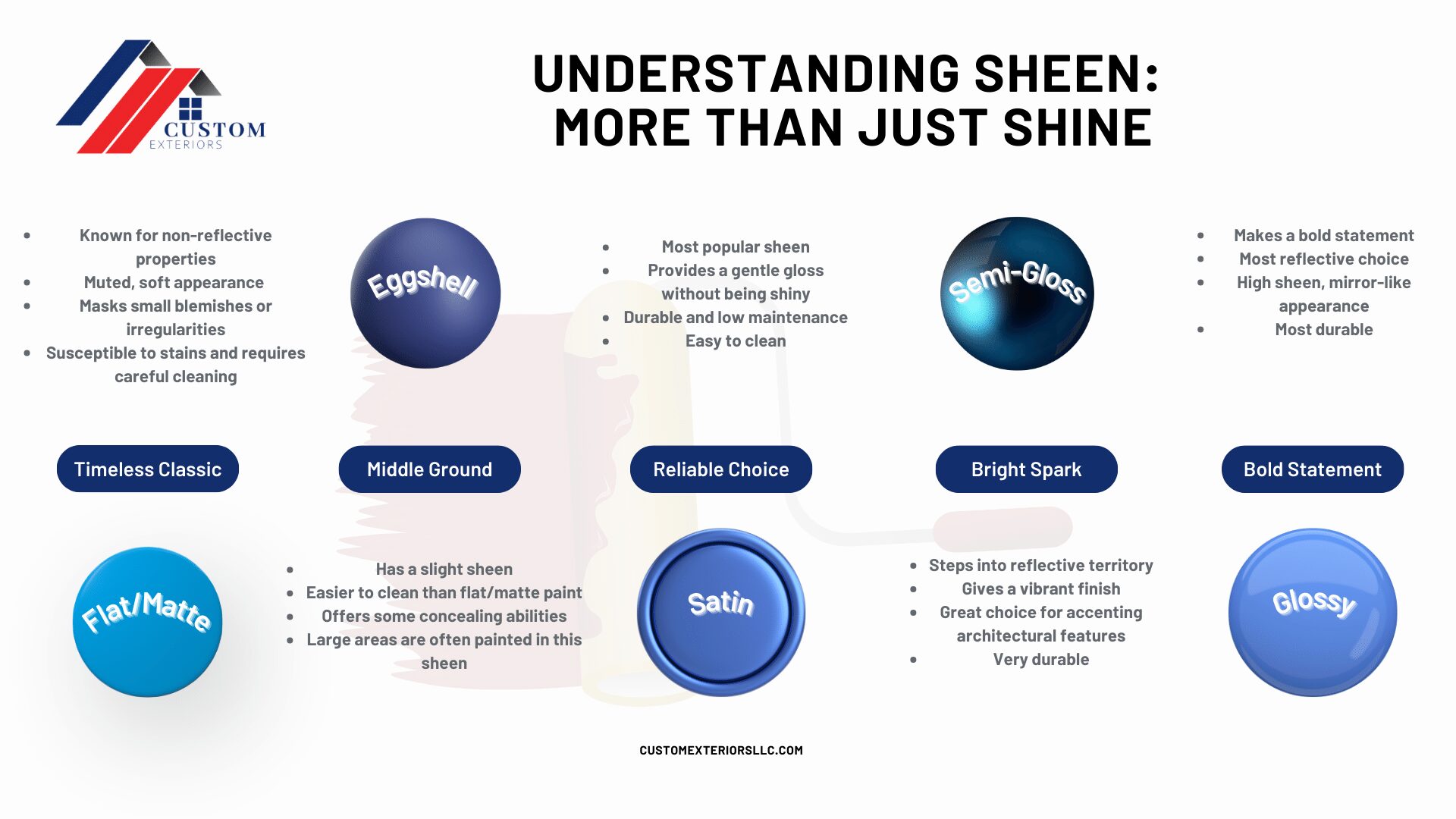
Flat/Matte: The timeless classic
A flat or matte finish is known for its non-reflective properties. This means it doesn’t bounce back much light. Because of this, flat pain has a very muted and soft appearance. A matte finish might be the best choice if your home is older with a story to tell with its imperfections. This is because it is excellent at masking minor blemishes or irregularities on the surface. However, while it’s great at hiding those little flaws, it’s also more susceptible to stains and might require careful cleaning.
Eggshell: The middle ground
Venturing into a slight sheen, we have the eggshell finish. As the name suggests, it’s reminiscent of the subtle shine on an egg’s shell. This finish is a step up from flat in terms of washability. It strikes a balance, offering some of the concealing properties of matte paints while being easier to clean. So, eggshell could be a great candidate if you’re thinking about painting larger areas like siding.
Satin: The reliable choice
Satin is a favorite among many homeowners. This finish provides a gentle gloss, which makes surfaces appear more vibrant while not being overly shiny. Its appeal doesn’t stop at aesthetics; satin finishes are known for their durability and ease of maintenance. They are forgiving with cleaning, making them a practical choice for exteriors that are exposed to regular environmental elements.
Semi-Gloss: The Bright spark
Stepping into a more reflective territory, the semi-gloss finish is all about vibrancy. It reflects light more efficiently, making surfaces stand out. If you have specific architectural features or areas like doors and trim that you’d like to highlight, semi-gloss is a good choice. Its bright nature not only amplifies beauty but also offers excellent durability.
Glossy: The Bold Statement
The glossy finish is the way to go for those unafraid of making a bold statement. It’s the most reflective of the bunch, providing a shiny, mirror-like appearance. Its high sheen is accompanied by impressive durability. However, with great shine comes great responsibility. A glossy finish accentuates imperfections, making preparation even more critical.
Choosing the right finish for your home is about understanding its characteristics and aligning them with your home’s needs and desired aesthetic. Then, with this knowledge in hand, you are well-equipped to make informed decisions. These choices will beautify your home and ensure it remains charming for years to come.
Insider tips for the best paint selection
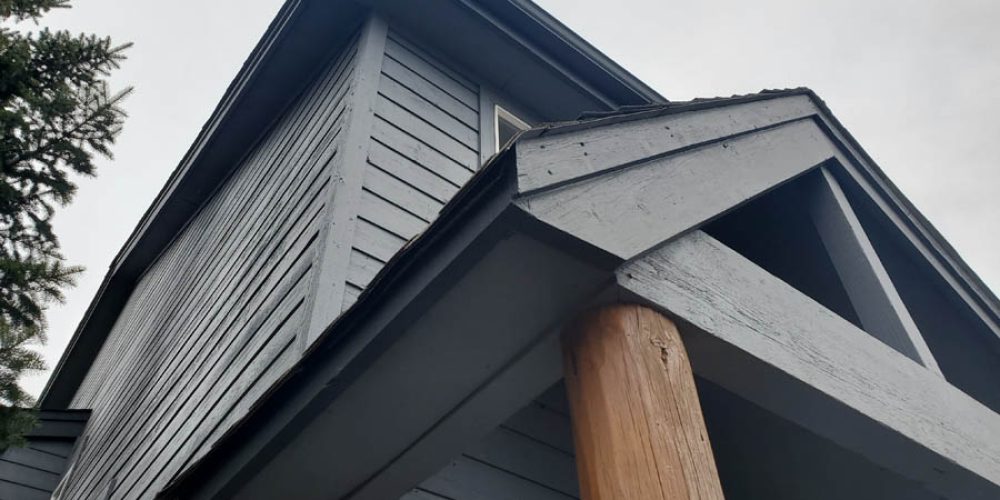
1. The foundation of painting: Surface preparation
Before diving right in, it’s essential to address the surface that will be painted. A clean, smooth surface can make a world of difference. If there are cracks, fill them in. If there’s old, peeling paint, give the surface a good scrape. And always remember to clean the walls from dust and dirt.
2. Tune into yor home's needs
Every home is unique, and so are its needs. For instance, a house in a dun-drenched area might benefit from paint with UV protection. Similarly, homes in wetter climates might need paint with mold resistance. By understanding your home’s specific challenges, you can choose paint that beautifies and protects.
3. The magic of test patches
It’s tempting to pick a color from a swatch and imagine it’ll look exactly the same on a large exterior wall. But, light shadows and surrounding elements can change how a color appears. So, a smart trick is to paint a small test patch on the wall. You can then observe it during different times of the day. This way, you ensure the color looks great under all conditions before committing and painting your entire exterior that color.
4. Quality over Quantity
It might be tempting to save a few dollars by opting for cheaper paint, but this might cost more in the long run. Higher-quality paints often mean better coverage, longevity, and resistance to the elements. It’s an investment in ensuring your home looks fabulous for extended periods.
5. Seek expert advice
Lastly, don’t underestimate the value of professional advice. Local paint stores or a local painting company often have experts who understand the unique challenges of your region. They can provide invaluable recommendations tailored to your specific needs.
Wrapping it up: A painter's parting words
In the world of painting, knowledge truly is power. The proper preparation, paired with a good understanding of your home’s needs, paves the way for a paint job that is not only beautiful but stands the test of time. Remember, it’s not just about color but about making choices that add value, protection, and beauty to your home. With the insights provided, your home’s next coat of paint is sure to be its best yet.
Contact Us Today
We Service and Support the Following Brands





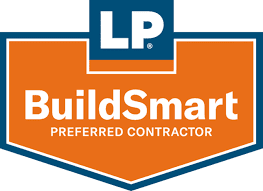



Contact
Custom Exteriors, LLC
18674 Co Rd 3, Berthoud, CO 80513
109 E. 17th St. Ste 5822, Cheyenne, WY 82001
102 S. Tejon St. Ste 1100, Colorado Springs, CO 80903
404 Broadway, Eagle CO 81631
Phone: 970-460-8714
Toll Free: 800-580-0131
Quick Links
© 2022 Custom Exteriors, LLC

